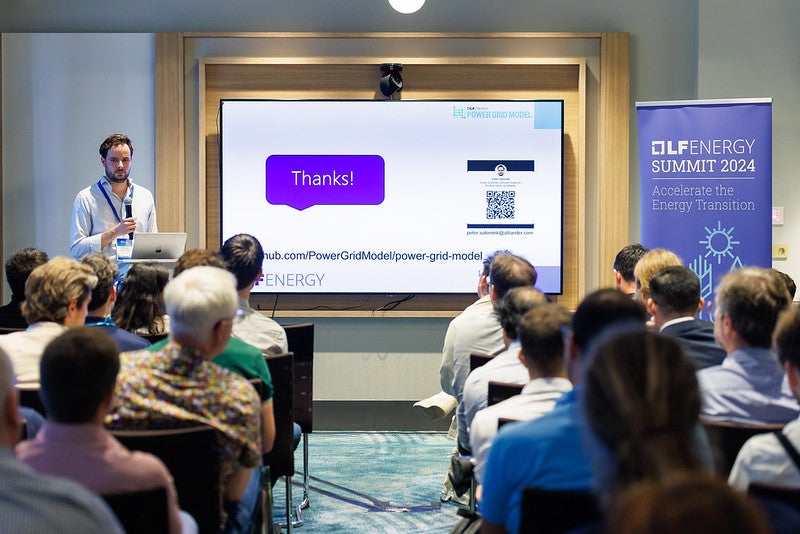LF Energy Summit Recap and Video: Distribution System Analysis Using Power Grid Model
At LF Energy Summit 2024 in Brussels, Peter Salemink from Alliander presented on how Power Grid Model is transforming distribution system analysis. With a background as a development lead and scientific software engineer, Salemink shared key updates on the project and its practical applications for distribution system operators (DSOs). Here’s a breakdown of the highlights from the session (full video follows at the end).
1. The Growing Complexity of Distribution Systems
Salemink began by explaining the increasing challenges faced by distribution system operators (DSOs). As the demand for electrification grows—driven by the rise in electric vehicles, renewable energy integration, and electrification of heating—the grid is experiencing unprecedented congestion. In 2023, the grid was near full capacity, with red zones indicating areas where no additional electricity could be used or fed back into the system. The traditional approach of expanding physical grid infrastructure (e.g., bigger transformers, larger cables) is slow and labor-intensive, leading to a critical need for smart grid solutions.
2. Smart Solutions: The Role of Power Grid Model
To address the grid’s growing strain, Alliander and other DSOs are turning to digital grid management tools like Power Grid Model. This open source software package provides high-performance grid calculations, enabling fast, scalable, and accurate analysis of electrical networks. Written in Python and C++, Power Grid Model supports real-time operations and future planning with a focus on power flow, state estimation, and short-circuit calculations. The software can perform both symmetric (three-phase) and asymmetric (single-phase) power flow analysis, offering the flexibility needed for a variety of grid configurations.
3. Use Cases: From Real-Time Operations to Grid Planning
Salemink highlighted three distinct use cases at Alliander where Power Grid Model is deployed:
- Real-Time System Operations: Power Grid Model is integrated into tools that allow DSOs to monitor grid health in near real-time, forecast congestion, and activate flexibility. This involves analyzing data from smart meters, running state estimation to understand current load conditions, and forecasting potential bottlenecks up to 48 hours ahead.
- Low Voltage Grid Planning (Project Delvi): Delvi focuses on time series calculations to forecast future grid conditions under different load scenarios. By analyzing the adoption of technologies such as electric vehicles and solar panels, the model helps planners identify bottlenecks in the low-voltage grid and propose mitigation strategies.
- Medium Voltage Grid Planning (Project Holonet): Holonet simulates the robustness of the medium-voltage grid using N-1 calculations to assess the impact of failures or outages. The project uses Power Grid Model to test multiple grid reconfigurations and identify the best solution for potential bottlenecks.
4. Technical Capabilities and Advancements
The session also highlighted significant advancements in the Power Grid Model project, including:
- Parallelized Calculations: The software offers native support for parallelization, which allows it to scale across multiple instances. This is particularly useful for grid simulations that require millions of calculations, such as when planning large-scale infrastructure investments.
- Serialization for Data Management: With new features like serialization in JSON and MessagePack formats, the project has improved the ease of saving and loading grid models, making it more adaptable to real-world use cases.
- Community and Collaboration: Peter emphasized the collaborative nature of Power Grid Model, which is used by multiple DSOs and academic institutions like Delft University of Technology. Though the software is maintained by Alliander, it benefits from contributions and requests from a growing global community.
5. Future Directions and Challenges
Looking ahead, Power Grid Model’s roadmap includes the introduction of single-phase load modeling, which will be crucial for more granular analysis as the grid integrates more distributed energy resources (DERs) like solar and battery storage. Salemink also acknowledged ongoing challenges, such as the need for more accurate reactive power measurements and the integration of real-world data from maintenance operations.
